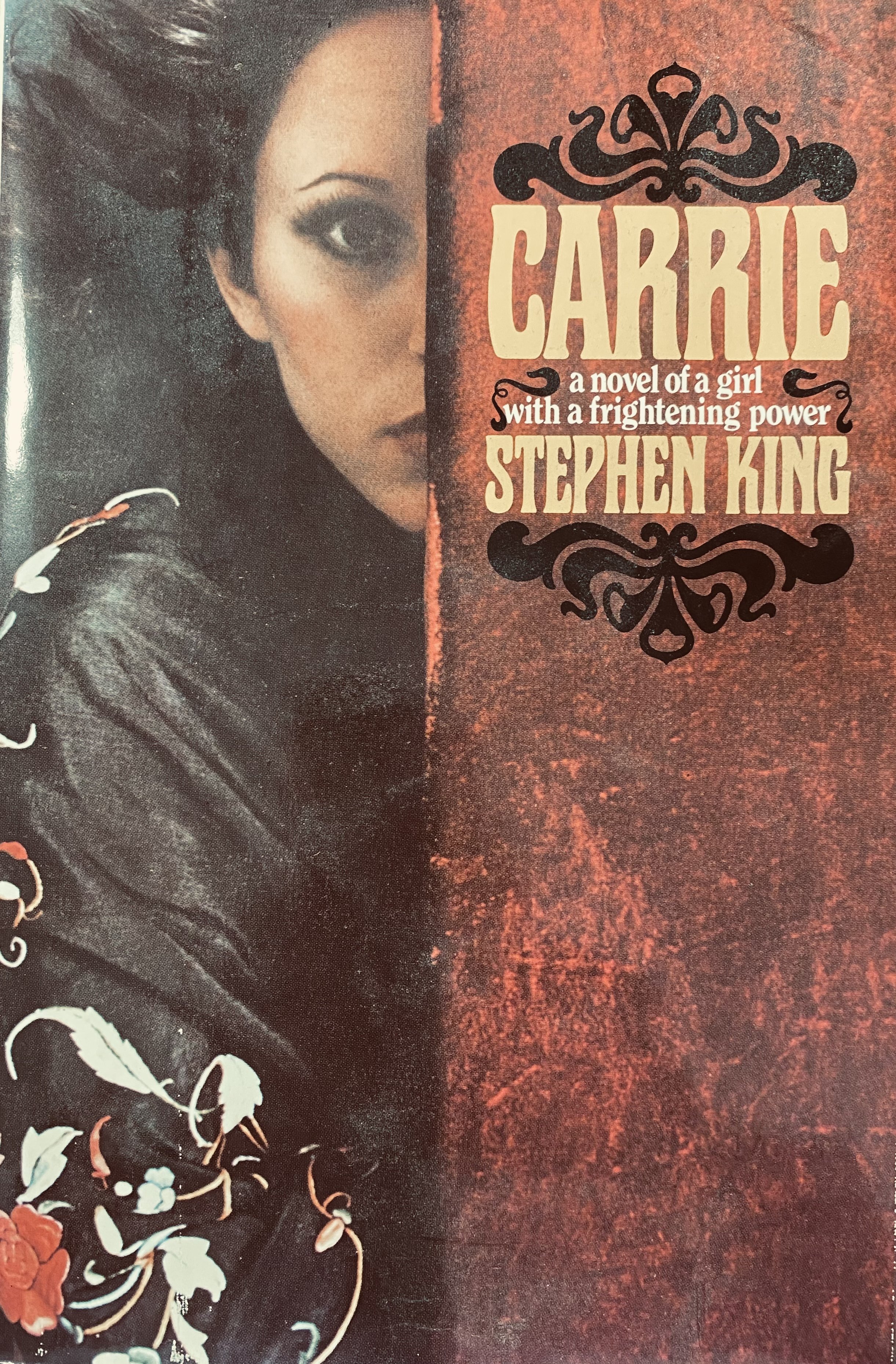I was 14 when the film version of Stephen King’s first published novel, Carrie, was released. It was 1976 and I was only a week shy of my fifteenth birthday, still too young to get into an R-rated film without an accompanying adult. But, then, so were nearly all of my high-school classmates, but you’d never know it: everyone was talking about Carrie that November. Maybe they all had more accommodating parents or looked older than their years. I just knew I wasn’t part of the conversation.
So I turned to the book itself.
I had a part-time job at my hometown’s public library. During one of my 15-minute breaks, I pulled Carrie from the shelf. I wanted to see what it was about this story that got my school buzzing.
I hadn’t read anything quite like it before. It was scary, but modern; most of the horror I’d read had been set in—if not actually written in—a distant past of archaic language and vaguely macabre images. Dracula, Frankenstein, Poe. I liked King’s contemporary twist on what I’d always associated with horror. At the same time, his approach caught me off-guard; the story is told through newspaper clippings and book excerpts interspersed with traditional narrative.
In some ways, Carrie confused me even as it kept me hurriedly turning the pages. It also changed my life: It introduced me to Stephen King.
A friend asked me recently what it was about King that hooked me. Now, after a lifetime spent reading King, the best I could offer was that he was the first author I ever read who seemed to put real daily life on the page. The people in Stephen King’s books ate at fast-food restaurants with familiar names, knew pop culture, lived in an immediately recognizable world that resonated with me as a teenager. Add in the supernatural, the macabre, the sometimes horrific elements—things that had excited something deep within me for as long as I can remember—and King completely won me over. He was the reason I wanted to be a fiction writer. (One of my most treasured possessions is a personally typed and signed postcard King sent me in reply to a fan letter I sent him in the early ’80s. He remains my main inspiration and influence, even as I continue to write and pitch horror stories.)
Since then, though, I haven’t always kept up with King’s work, only checking in occasionally. Maybe I was daunted by so many books, so many big books. Still, I’ve continued to buy his novels and collections. And in 2021 I finally completed my King collection. So I’ve decided it’s time to go back through his work and read all of the books I’ve missed. (I’m skipping all of his co-authored titles, as well as his Dark Tower series, which I tried and did not like.)
It was the first of his older novels that I’d never read. Reading it was a revelation.
It is a brilliant lesson in expansive storytelling, character development, and setting. (Not to mention timeline management.) For me, there were no extraneous scenes, no conversations that should have been cut, no pointless digressions. Everything that was here deserved to be here. (I would even say that’s true of the controversial scene near the very end of the book; although I don’t fully understand it, I am willing to accept it. Given the content of the scene, I thought it was handled beautifully.)
To think that this complex, multilayered, and enthralling story was inspired by the “Three Billy Goats Gruff” fairy tale is absolutely mind-boggling. It’s equally mind-boggling to realize that It is “early” Stephen King. Any other author might consider It their magnum opus, given its size and scope; King has gone on to publish over 40 more novels since It’s release.
Today, I remain a Stephen King fan. And I’m looking forward to making my way through all of the books I previously overlooked. Of course, I’m sure there will be some less-than-stellar stories along the way (I’m nervous about The Tommyknockers). But I’m equally sure that there will always be great storytelling. Because that’s one thing that has remained unchanged from the very beginning.
Carrie on, Mr. King. And thank you very much.

